Reviewing the Five Key Words (Themes) from p. 3ff
As discussed in Weeks #1 & 2, Calvin introduces five key ideas that will be essential for us to put the whole book together:
- The Holiness of God
- A Model for living the Christian Life
- Life (Spiritual Life that we have by virtue of God’s Work of Regeneration)
- Image (that we are to be the image of God)
- The Philosophers
An Illustrative Graphic of the Five Key Words
Below are a series of graphics that are given as a potential aid in thinking about the significance and interaction of the above five key words.
Graphic 1: The Hand Where The Mind Meets the World
Shown below is the hand representing the expression of life, where the mind, the inner being (soul), encounters the world, expresses life. Each of the five key words is used to designate each digit of one’s hand. The digit known as the thumb (which we’ll also term a finger) represents the “Holiness of God” which Calvin refers to by his word “righteousness.” Calvin’s claim, from the very first sentence of the Little Book is that God has called us to a life in agreement with His “righteousness.” I understand that to mean something much deeper than merely than God’s character is without unrighteousness, that is He is absent any flaw or even sin, hence the use below of the “Holiness of God,” as discussed in Week #2.
The index finger is used to represent Calvin’s idea of a “model” for the mature Christian life. As described in previous weeks by “model,” Calvin means a framework, an always-oriented heading, even one’s fundamental purpose of being. The Latin word from which we get “index” (indicare) means a discloser or discoverer, which is appropriate for a life-model. As will be discussed, such model is discovery not (self-) design. (When we get to Ch 5, the D&P translation will express the idea of a “model” as a “rule” of life).
The middle and ring finders are as shown “life” and “image” where life in D&P was expressed as “God’s work” translating Calvin’s Latin word for “regeneration,” and “image” is the key word “imitators” of Ephesians 5:1 cited by Calvin as what one’s life should reflect. The most important reality of a Christian’s life is that he or she has God’s very “life” itself, regenerated from one’s fallen condition of death. Such is the work of God, not of ourselves. “Image” captures better the idea than “imitators” which tends to convey the idea of fakery. The idea of “image” is that we reflect God in some way into space-time, genuinely but not as to His unique God-attributes such as omniscience and omnipotence. “Image” goes back to the very beginning of God’s Creation pre-Fall in Genesis 1:25-26 wherein man was made in such form, and the Great Vandal of Genesis Ch 3 drew Eve, then Adam, away toward the lure of their own self image by the great lie…”you shall be as gods” (Gen. 3).
Finally, the pinky finger represents Calvin’s repeated reference to “philosophers.” Calvin’s century (the 16th) was rife and riddled during a period of time referred to by historians as “the Renaissance” (ca. 1350 – 1700). Among the many features of such period was the rebirth of interest and passions of ancient Greek philosophy and ethics (Aristotle, the Stoics, etc.) and other historic texts. So Calvin lived between two worlds: the strong, centralized Roman Catholic religious and political system on the one hand, and the “philosophers” make independent claims of ultimate reality and meaning of life, metaphorically surrounded as it were by both the forces of Rome and Athens.
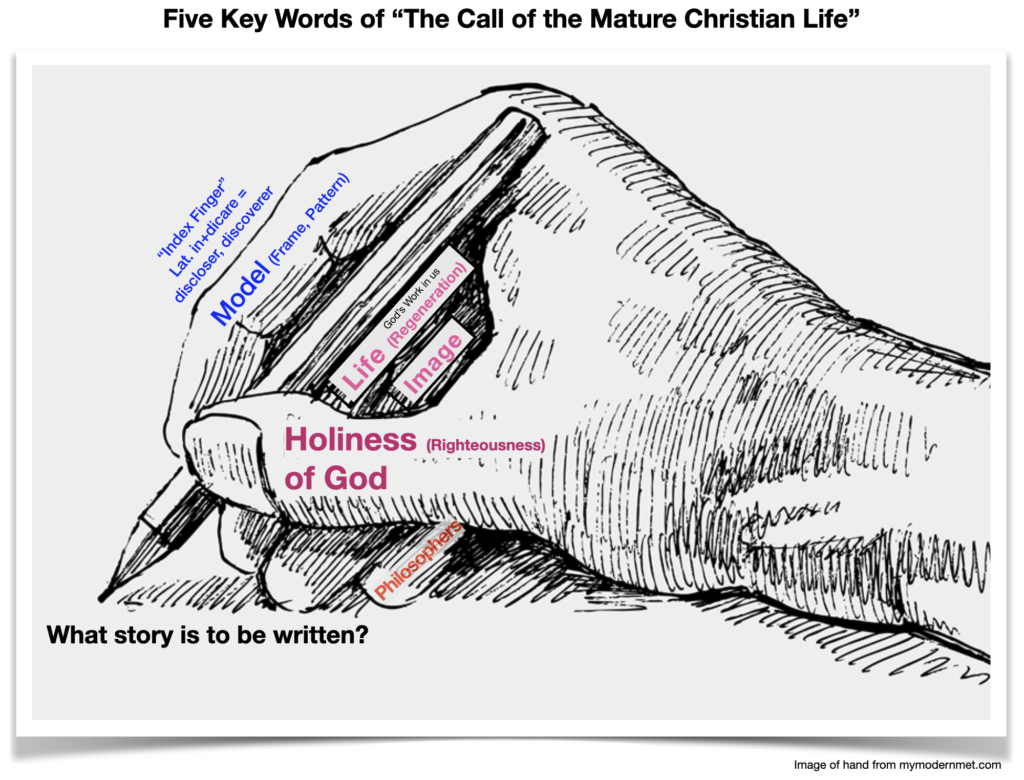
Graphic 2: The Life of the Hand of Life Comes from Outside the Hand
Graphic 1 above would be inoffensive in almost every part of our present culture, primarily because it suggests that the hand is merely the agent of self-determined, self-measured life which, may, as it chooses, take note of various deeper realities as shown by the identification on the digits. That graphic suggests that the pen writes one’s own story, as in the song “I did it [or am doing it] my way” or Walt Whitman’s famous poem, “Song of Myself,” either of which could be the theme song of our culture. But Graphic 1 is not the picture given to us by the Scriptures, nor by Calvin.
Below, in Graphic 2, shows passages of Scripture from the Upper Room Discourse where the Lord is in communion with His Apostles, that give advance notice that His physical absence will be transitioned to the inner being of our regenerated life through the ministry of “The Helper” (also translated “Comforter” or “Advocate”), clearly referencing the Holy Spirit God (not a force, but a Being of the Trinity).
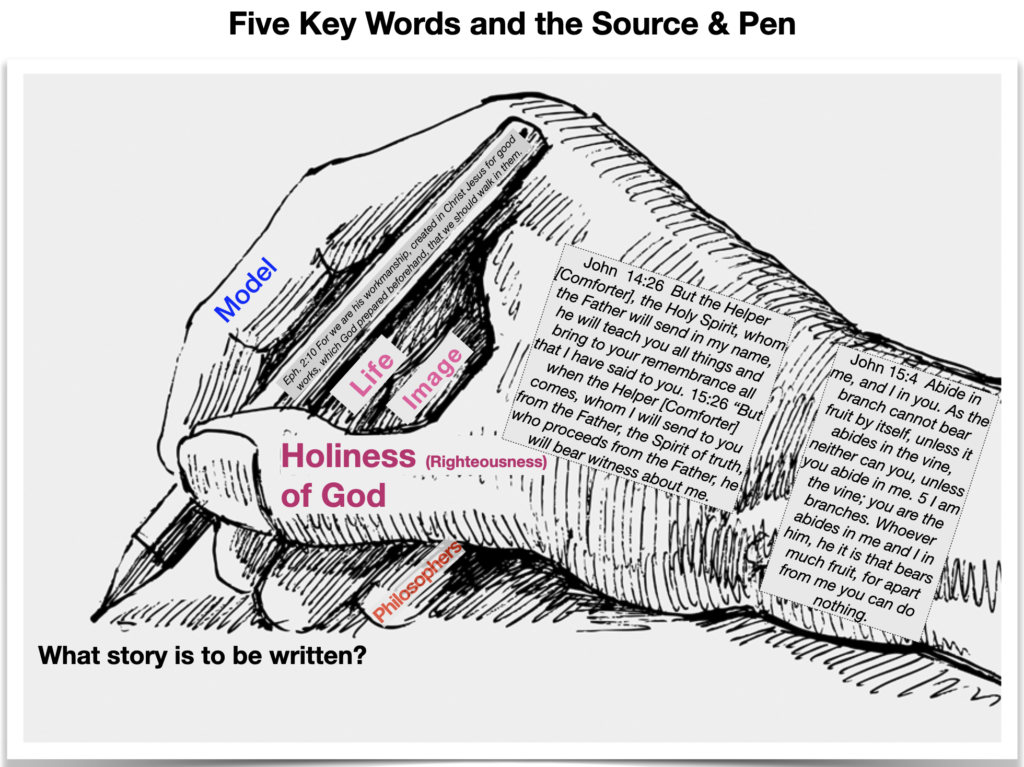
Graphic 3: Using “TULIP” as a Summary of the Five Key Words
As shown below, we can remember this imagery by the use of TULIP, though a different form and context than the well-known TULIP derived from the answers from the Council of Dort (1620) to the false claims (so called “remonstrances”) of the followers of Jacob Arminius (1609).
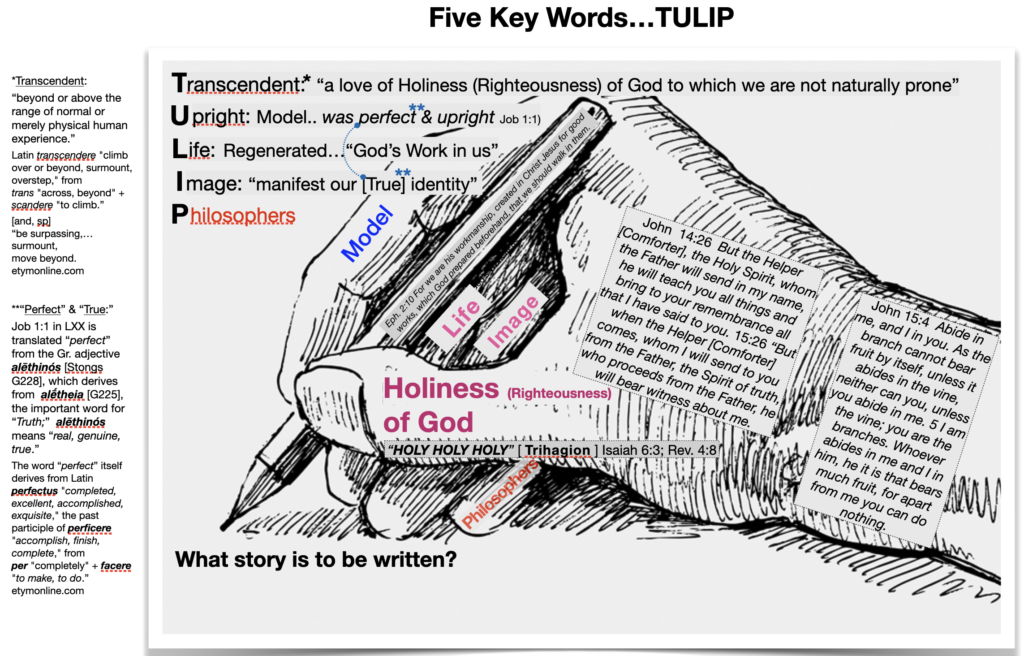
Graphic 4: The Call of the Philosophers is Always with Us
Scriptures give us many examples of “philosophers’ giving messages opposite to the revelation of God. (Recall that “philosopher” does not mean “professor” or some ivory tower type, but, literally from the meaning of the word, a lover of wisdom, and in the context of Calvin’s Little Book a form of ‘wisdom’ that is independent of, and actually contrary to, the Wisdom of God).
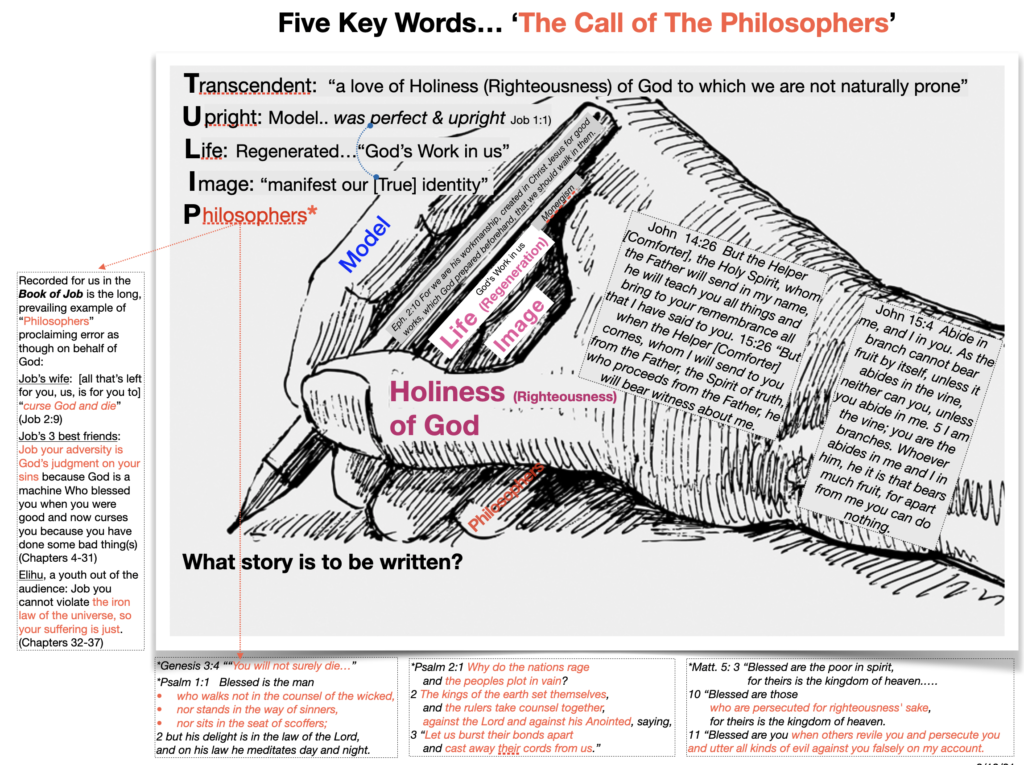
Walk in the Spirit
A common word used in the New Testament to describe our life is “walk,” and a particular form of “walk” as in “walk around” or more literally “a circumscribed walk,” that is a looping walk whereby one returns after some journey of a day back to home. The word so translated is shown below in the Epistle to the Ephesians:
Image of God
What is the pen (shown in the graphic above) writing and who is doing the writing? The “who” is easiest to answer though complex to experience, namely: it is God Who is at work in us both to will and to do, though it seldom feels that way, and in practical terms is primarily obscured by “us” and our agendas of life. The “what” is even more difficult to discern. We like to think that such is our prosperity, flourishing, including health, wealth, happiness, etc.. But God is painting a much bigger picture that has a deeper version of flourishing in mind.
Our thoughts on being the “image” of God, the picture being portrayed, is here:
Verses Cited by Calvin in Chapter 1, Sec. 1-2
The below chart includes the verse cited by Calvin in the Beveridge translation (1845) and in the D&P translation we have been following:
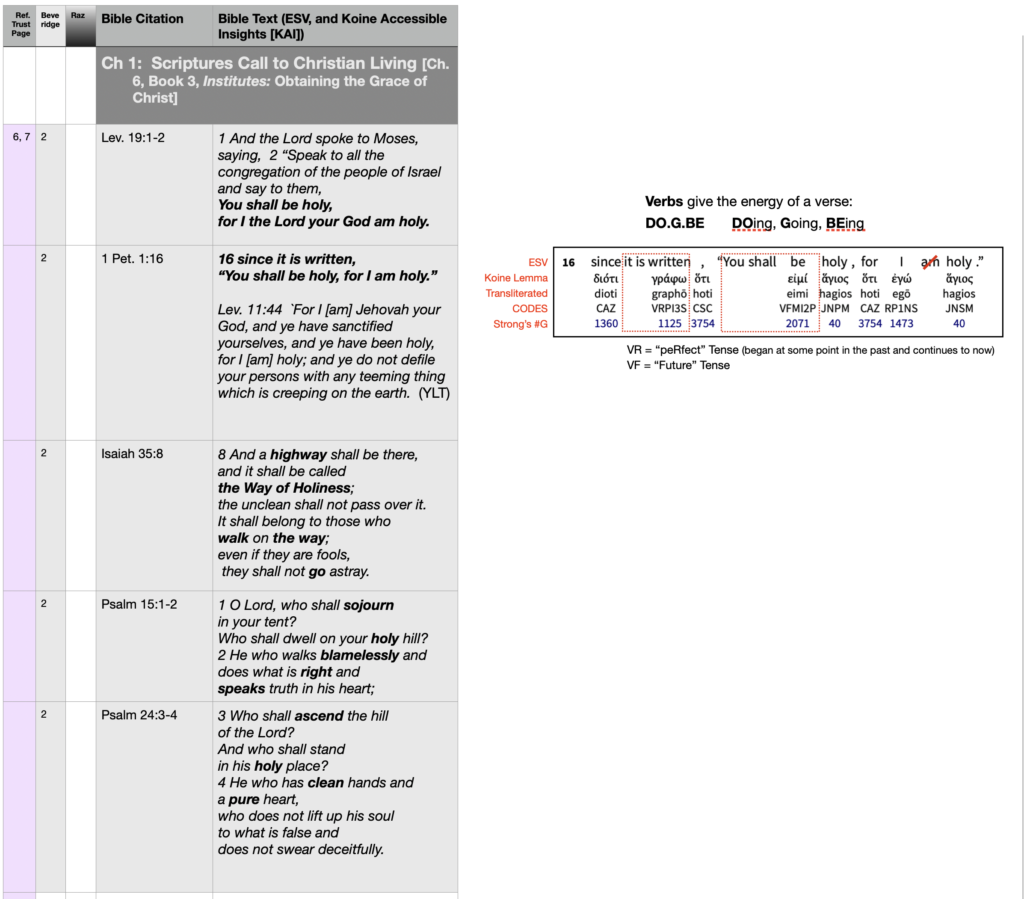
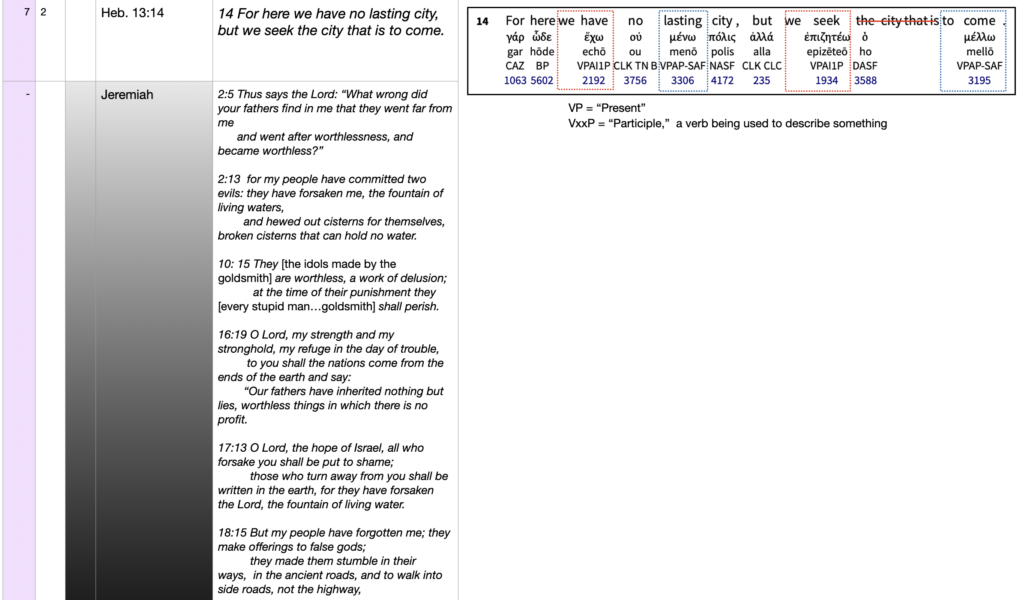
Verses from Calvin Ch 1, Sec 3
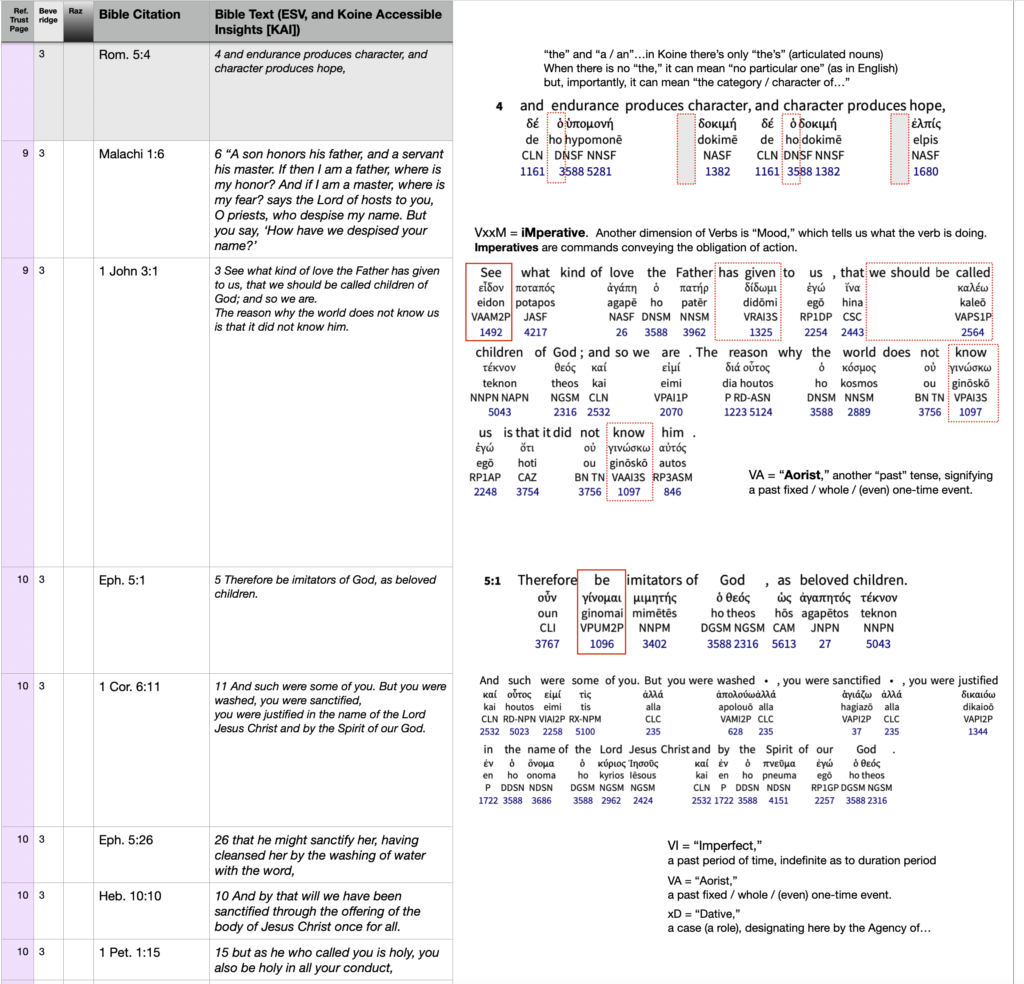
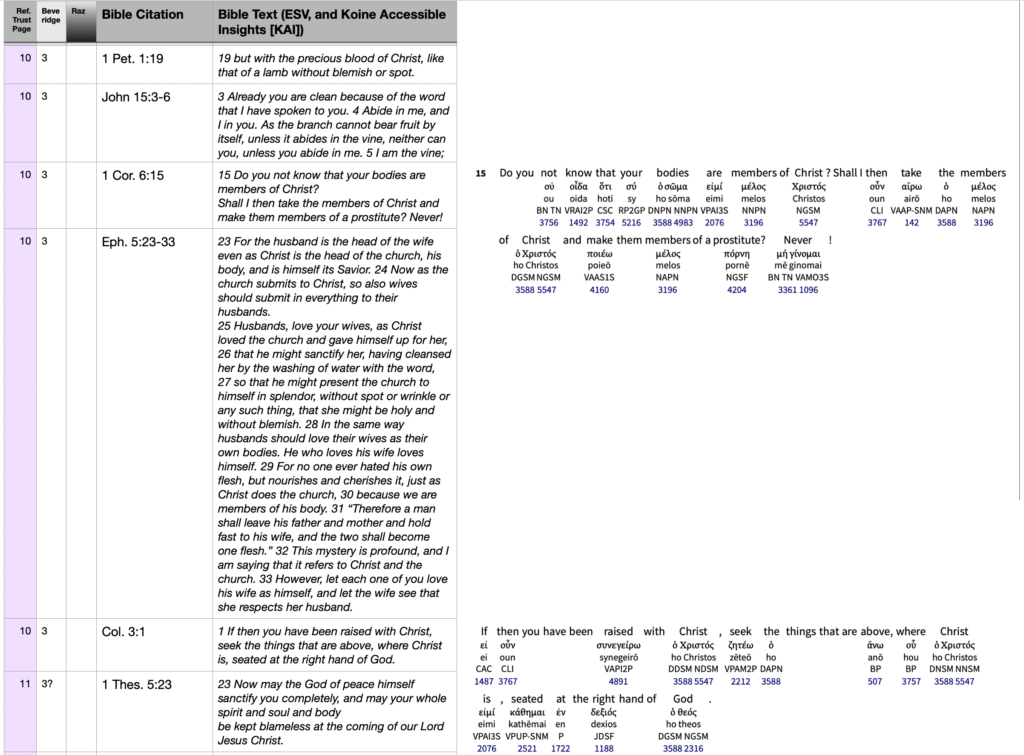
Dr. Martyn Lloyd Jones (MLJ)
Martyn Lloyd Jones (MLJ) taught the Epistle to the Romans over a period of some 13 years, ending in 1968, at the church in London where he was senior minister. There are many wonderful messages, all available at no cost at the website established to preserve such teaching. Of particular relevance here is his message on the consequences of sin from Romans Ch 7 as to making us utterly powerless not only to self-save (as to regeneration) but also as to self-sanctification. A link to that message is here: